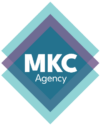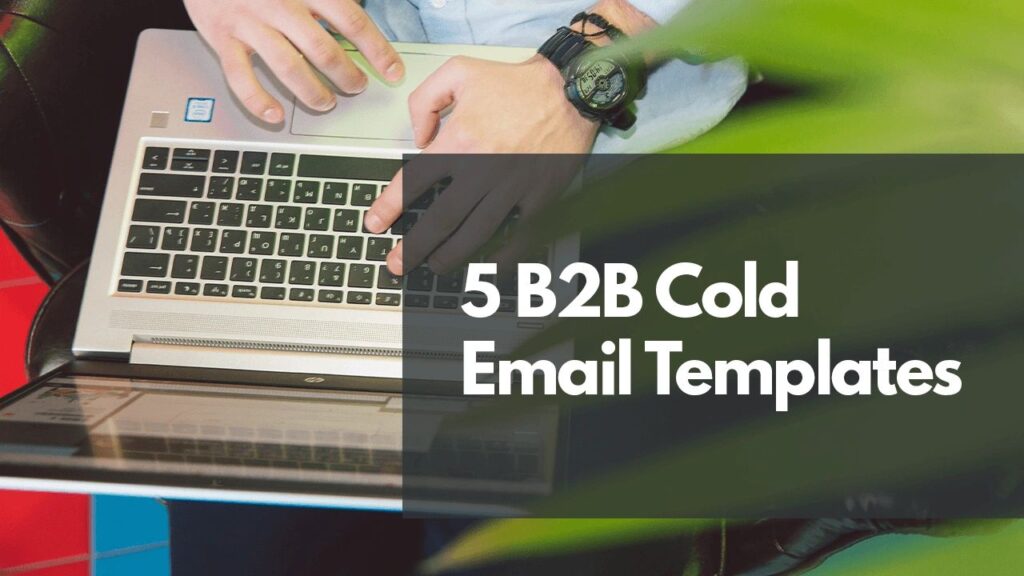I’ve got some bad news and some good news.
The bad news is that when you’re a B2B sales professional, then your leads, prospects, email service, the government and industry executives—they’re all against you.
Well, not you personally; more like, they’re opposed to many of the practices and behaviours that have unfortunately given salespeople a bad rap. You’re the unsuspecting victim of poor past practices, and now, it can take weeks to track down a single email address. With the use of sophisticated spam filters, governments have even banned cold emails unless specific requirements are met. The joys of marketing, amiright?
The good news is that we at Megan Killion Consulting can help. We’ve sent literally hundreds of cold emails over the years and have learned quite a bit about which techniques lead to a conversion–and which don’t (we’ve gone through trial and error, so you don’t have to).
In this post, I’ll share with you five cold email approaches, along with templates for each, that you can use to increase your chances of success.
The “right contact” approach
By far one of the most popular cold email strategies is asking the recipient if they’re the right point of contact. This approach has been leveraged for many years by sales professionals because it’s been proven to work.
Particularly when reaching out to senior executives at a company, the “right contact” approach is an effective strategy. When taking this approach, you can establish buy-in or at least intrigue from a CEO, and then your request will be delegated down the organization to a more appropriate contact. There’s no reason to turn you down, and as a bonus, you get directed to the exact right person to talk to. The other advantage is that when you engage a senior team member, they become connected to the outcome and can help you move the deal forward. In our books, that’s a win-win.
Here’s a sample email using this approach:
Subject: Are you the right person?
Hi [First Name],
I hope you are doing well, I just have a quick question for you –
Would you be the right person at [Company] to talk to about [Product/Service]?
If not, would you be kind enough to point me in the right direction?
Many thanks.
[Your Name]
The problem-focused approach
In the B2B business, your main selling point is that your product or service solves a problem. The problem-focused approach to cold email is centred on grabbing a recipient’s attention by exposing their problem and then confidently showing that you can solve it.
Here’s an example of this approach:
Subject: Managing payroll is tough. Let us help.
Hey [First Name] – As an entrepreneur, managing payroll is probably at the bottom of your list of things you want to be spending your time on, especially when your company is growing as much as I read in [article/software/etc].
You should be spending more time on [priority task] and less time dealing with 401ks, benefits and payroll management.
[Your Company] helps organizations like yours focus on what you do best while we manage the payroll. We’ve helped companies save money on accounting fees, free up time and find budget inefficiencies that were being overlooked.
If you’re tired of handling payroll and need some help, let’s schedule a time to chat. What’s your calendar like next week?
As you can see in this template, the focus is on the pain points of your prospective client–in this case, payroll–and it clearly outlines how the sender’s company could take those burdens off the recipient’s plate. This tactic of placing the problem front and center in the email forces the recipient to confront the problem and decide whether it actually resonates with them (as a salesperson, you hope so!).
The central intelligence approach
Big Brother is always watching…just kidding. However, there is something so compelling and attention-grabbing about a company that is obsessed with you enough to try to find out everything they can about you. So take a page from the CIA and find out as much about a prospective company as you can–and then use it.
The central intelligence approach boils down to finding out something about the prospect’s existing business and putting that knowledge at the beginning of your email. For example, if you’re selling marketing automation software, you might write an email like this:
Subject: Is [Competitor] working for you?
Hey [First Name] – I see that you may be using [technology] as a [service delivered], and I was wondering what kind of results you’ve seen so far.
I’ve met a handful of companies using [Competitor] who have found [problem – scaling issues, glitch, missing feature, internal failure, etc]. In fact, many companies have turned to [Your Company] for assistance and leveraged our [solution] to increase [result].
I’ve got a bit of availability on Tuesday and Wednesday this week if you have time for a quick chat about this—let me know.
PS: Here’s a great rundown on why more [technology] users are [switching to or using] [Your Company].
-Wait what? How did you know–
That’s the reaction you want.
In some industries, it will be pretty easy to find out what businesses or tools your leads are working with. In others, it might be a bit more challenging and require a little digging. Some tools that can help you gather this type of intelligence about a prospect are BuiltWith.com, DataNyze, NerdyData, and Wappalyzer. These tools can show you the web frameworks, ecommerce platforms, analytics tools, advertising networks and other programs and tools that companies are using simply by visiting their sites. Thank me later.
The curiosity hook approach
Curiosity may have killed the cat, but it hooked the lead.
In a study conducted out of Carnegie Mellon University, researchers sought to find out why people open certain messages but not others. The researchers found that the recipients were more likely to open an email that made them curious as to what was inside.
As you might have guessed, the best place to excite curiosity is in the subject line for your email. Once you’ve done that, it’s important that the first one or two sentences continue to maintain curiosity in your reader. The template below is an example of how this could work for a cold B2B email:
Subject: You know this about [service (e.g., payroll, inside sales, marketing)], right?
Hey [First Name],
Did you know [startling fact about the industry]? Crazy, right? When I found this out, I was kind of floored and it made me change the entire way I do business. Most recently, [Your Company] has started assisting companies like yours solve [problem] by tackling these three things:
- Benefit
- Benefit
- Benefit
We’ve worked with clients like [Customer 1] and [Customer 2] and they’ve seen amazing results. If you’re interested in learning how we could help you, I’d love to schedule some time to chat.
In the meantime, I think you would also appreciate this blog post we wrote that highlights everything you should know about [service]: [LINK] — Check it out and let me know what you think.
My calendar is pretty flexible this Friday if you’re around for a call.
Hook, line, and sinker.
The 10x personalization approach
The main complaint from executives these days is the avalanche of automated, impersonal emails that get dumped in their inboxes. I know what you’re thinking, but a lot of the traditional personalization tricks such as using a lead’s first name and mentioning their company in the email are not enough to stand out—even bots can do that. As a result, many executives are putting their blinders on and ignoring practically every cold email that hits their inbox.
And that is bad news for you.
So how can you stand out in a world of automated personalization?
Simple: Go way above and beyond. Think big.
The 10x personalization approach is the idea of making sure the prospect feels like you’ve truly done your research. It’s not an easy approach to implement but if you’re going after enterprise deals, 10–20 minutes of research might be all it takes to cut through the clutter and close a game-changing customer.
The template below shows what an uber-personalized email might look like:
Subject: {First Name}, did I catch you? 🙂
Hey {First Name},
I hope this email finds you well! I wanted to reach out to you because we are in the same {LinkedIn Group, Slack Group, Association, etc} , {Link To Group} and I think I may have something interesting for you.
If I did my homework correctly you are spending {Estimate} per month on {Service relevant to yours} at {Company website} and {Any other information related to the spend}.
I work at a {Company Name} and we {Value proposition}. We can lower your monthly cost for {Service mentioned above} by XX% with very little effort.
Just reply to this email and I’ll give you a product demo.
Let me know what you think!
Did you catch all the personalization in there? An email like that will definitely get a response.
I hope these ideas have inspired you to optimize your cold email marketing strategy! One last word before I leave you: remember that you’re not the only one using these templates.
Just as you found these cold email templates, someone else in your industry has likely also found and started using them. That’s why it’s important to never copy and paste an email and run with it as is. Instead, tweak the templates to fit your own voice and your own personal piece of the B2B pie.
Need help crafting effective email templates for your business? Looking for a deeper understanding of B2B marketing strategies and how to implement them effectively? At Megan Killion Consulting, we’ve been crafting successful cold email campaigns and every other marketing strategy you can imagine. Book a chat today to get started on addressing your unique business needs and allow us to show you how we could help move your brand forward.

